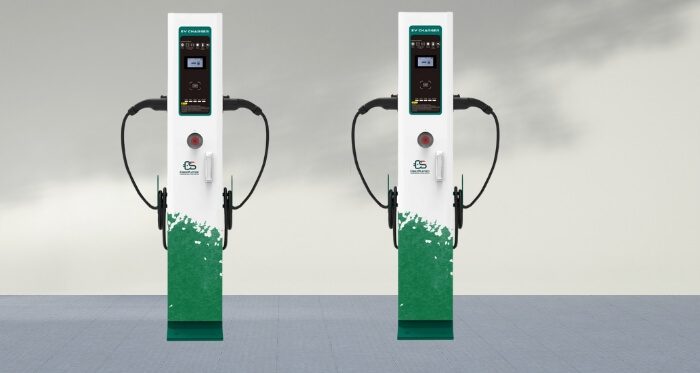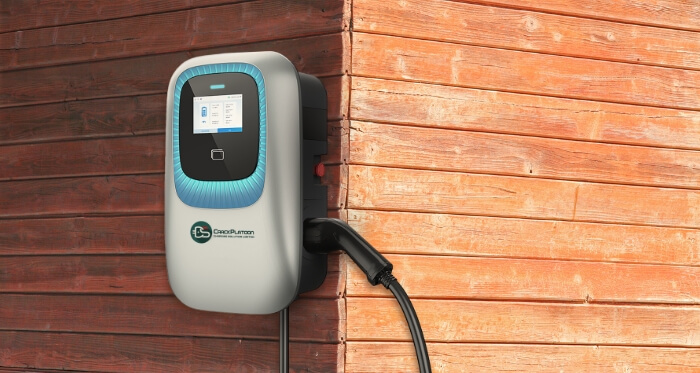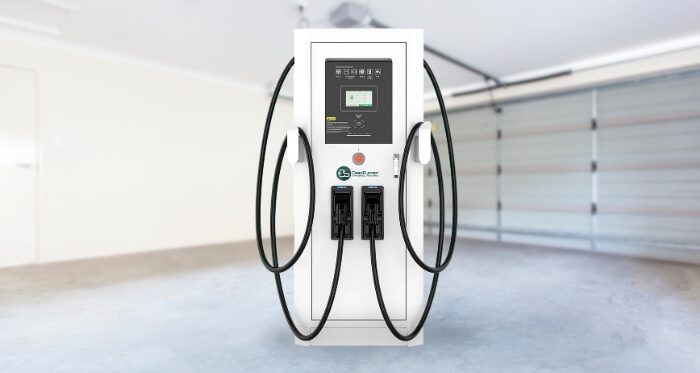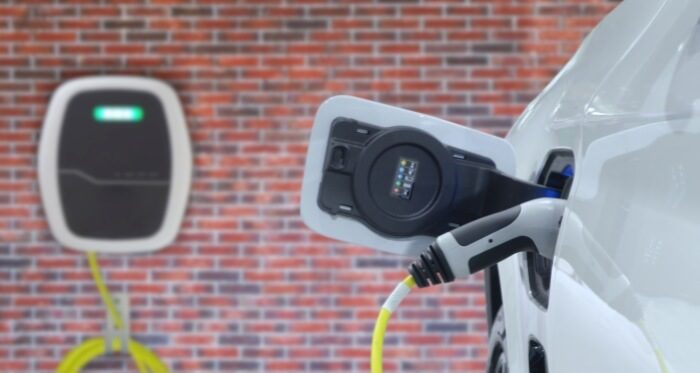The modern world has evolved as innovations have taken place in recent times. One of the fundamental aspects of its innovation is Electricity. Which now transforms its reality into a wide range of functionalities. Introducing EV (Electrical Vehicle) is one of the most recent innovations of this scientific era. It is a step taken to reduce the carbon footprint of the environment.
Now, whether you heard it for the first time or not, you will certainly have some knowledge gained while ending this article. We will discuss the process and definitions of EV systems. The types of EV charging stations are available in the market for you to choose from.
There are three categories of EV charging stations now in the market. Which has two different charging systems AC and DC. It is classified based on its charging capability. We will explore all the aspects related to EV charging systems.
Crackplatoon Csl, an EV charger supplier in Bangladesh and service provider introduced a varied EV charging system. Interested in EV charging systems? You’ve come to the right spot! So, fasten your seatbelt as we begin the journey of learning the types of EV charging stations.
What is an EV Charging Station?
The infrastructures that contain the various EV chargers are referred to as EV charging stations. They are the optimal points for charging Electric Vehicles (EVs). Eventually, they play a vital role in the widespread adoption of these environment-friendly vehicles. The vehicles consist of a DC battery which requires the current to refill its energy. EV chargers are the ones who provide the refill to these batteries.
Components of EV Charging Stations
They have basic five components. Which are socket outlet, plug, cable, connector, and vehicle inlet. Depending on the voltage and power supply they are classified into different levels or types. The methods of charging systems are AC and DC. While AC methods are typically slower in charging than DC.
Types of EV Charging Stations

In this modern sustainable world, the rise of EV vehicles is dominant. So, learning their charging station types is essential. The following are types of EV charging stations.
- Level 1 Charging stations
- Level 2 Charging stations
- DC Fast Charging Stations or Level 3 Chargers
Level 1 Charging Stations: What You Need to Know?
Level 1 charging stations contain level 1 chargers. They are the most basic model for EV charging. They have a socket outlet where it connects the plug from the vehicles. It is a convenient solution for the EV owner who doesn’t require fast charging.
Gradual but Steady Charging
The charging process is slow for level 1, providing approximately 3-5 miles of range per hour. Their power delivery capacity is between 1-1.4kw per hour. Which is ideal for overnight charging, ensuring your EV is ready for daily commutes.
This cost-effective method requires no special equipment, making it accessible to EV owners worldwide, from California to EV Charger Bangladesh. However, for faster charging needs, you may consider Level 2 or DC Fast Charging options for added convenience and flexibility.
Level 2 Charging Stations: A Faster and Convenient Option
Level 2 chargers are a slightly faster and more convenient option for electric vehicle (EV) owners. As they are more powerful than the level 1 charger. They are often very useful for charging in less time than the level 1 charger.
Versatile Charging Solutions
They offer a charging rate of approximately 12-80 miles of range per hour. These are commonly found in homes and public locations. Their power capacity ranges between 3.9 and 19.2 KW per hour. Various EV charger Suppliers are providing these chargers.
Here are some EV chargers I’ve mentioned below which are exclusively available in CrackPlatoon. They are:
AMITI21-AC Type Charging Stations from CrackPlatoon
CrackPlatoon has some charging products and services to offer for EV owners. Among these services, the EV charger AMITI21-AC type is a primary model. It can be used in a home and can be delivered by vehicle. It supports Type 1, Type 2, GB/T. They can charge EVs that have a power capacity between 7-22 kWh.

Specifications and Features
Here we outlined the specifications and features of these charging stations. It will provide more insight and knowledge for you.
- The body is made of durable ABS material.
- Single outlet design for user convenience.
- Lightweight at 3 Kg (excluding the cable).
- Compact dimensions: 350mm x 196mm x 150mm.
- Generous 4.2m cable length.
- Input voltage capacity: 230VAC.
- Single charging socket for simplicity.
- Output rating: 400 VAC for single-phase and 22kWh for three-phase.
- Easy installation at various locations.
- Real-time fault monitoring for remote diagnosis.
- User-friendly with a humanized operations system.
- Supports multiple mobile payment methods.
- Comprehensive electric pattern for user convenience.
- 5” LCD touchscreen with emergency stop button and LED indicators.
- RFID functionality for secure access.
- Ethernet network interface for communication.
- Quality assured with TUV and CE certificates.
- Suitable for offices, shopping malls, charging stations, and family garages.
These charging stations offer a range of features and certifications to make your EV charging experience efficient and user-friendly.
MIHIR52-AC Type Charging Stations from CrackPlatoon
The MIHIRS2 charging pile is a versatile AC charging pile suitable for a variety of scenarios, rated power of 7-43kW. It supports Type 1, Type 2, and GB/T. The whole machine design is simple & practical. It is easy to install, with a high protection level, which meets IP54 level dustproof and waterproof.

Specifications and Features
- Sturdy sheet metal body with single and double outlets.
- Substantial weight of 53 Kg (excluding the cable).
- Dimensions: 1630mm x 280mm x 400mm (H x W x D).
- Ample 4.2m cable length.
- Input voltage capacity: 230VAC (single-phase) and 400VAC (three-phase).
- Output current: 32 amp and 7-11kWh (single-phase) and 63 amp, 22-43kWh (three-phase).
- Easy installation in various locations.
- Real-time fault monitoring for remote diagnostics.
- Humanized operations system for user-friendliness.
- Support for multiple mobile payment methods.
- Comprehensive electric pattern for ease of use.
- 5” LCD touchscreen with emergency stop button and LED indicators.
- RFID functionality for added security.
- Ethernet network interface for communication.
- Suitable for various EV models in offices, malls, charging stations, and industrial parks.
With user-friendly design, real-time diagnostics, and compatibility with major EV models, our charging stations are ideal for various settings, from offices and malls to charging stations and industrial parks.
ALAK48-AC Type Charging Stations from CrackPlatoon
The ALAK48 charging pile is an AC charging pile for commercial use and can be delivered by vehicle, rated power of 7-22kW. It supports Type1, Type2, GB/T. There are two types of mounting: wall box and floor-stand.
The whole machine design is simple, practical, and easy to install. Its high degree of protection meets the IP54 level of dustproof and waterproof.

Specifications and Features
- Sturdy aluminum alloy body with a single outlet.
- Lightweight at 5 Kg (excluding the cable).
- Compact dimensions: 375mm x 260mm x 104mm.
- Ample 4.2m cable length.
- Input voltage capacity: 230VAC (single-phase).
- Single charging socket for convenience.
- Output rating: 400 VAC for single-phase (7kWh) and three-phase (22kWh).
- 5” LCD touchscreen with emergency stop button and LED indicators.
- RFID functionality for added security.
- Comprehensive protection features: overvoltage, over-current, and leakage protection.
- Natural cooling system for efficient operation.
- Real-time fault monitor for diagnostics.
- Anti-UV protection for durability.
- Ethernet network interface for seamless communication.
- Humanized operations system for versatile use.
- Support for various mobile payment methods.
- Strong applicability, suitable for major EV models.
- Ideal for offices, malls, charging stations, and industrial parks.
As they significantly reduced charging times compared to Level 1 chargers. It makes them suitable for daily use and ensures your EV is ready to roll in less time. Whether you’re at home, work, or out the Level 2 Charging provides the versatility and speed that modern EV owners appreciate.
DC Fast Charging Stations: Lightning-Speed Power for Your EV
DC fast charging is often referred to as “lightning-speed power” for your EV. Also, they are referred to as the level 3 EV chargers. Which is a game-changer in the world of EV charging.
Rapid Charging Process
They can deliver a significant charge in as little as 20 minutes. Because their power capacity is 50-100 KW per hour. This makes DC fast charging the ideal solution for long trips and on-the-go charging. This charging system utilizes an off-vehicle rectifier to convert AC input power into DC, which is subsequently supplied to the vehicle.
RUMI71-DC Type Charging Stations from CrackPlatoon
The RUMI71 Fast DC electric vehicle charger is the most comprehensive model from CrackPlatoon Csl. These models have double outlets, also have a modern exterior design, and a user-friendly operation interface. It has low maintenance costs due to its remote diagnosis capability and OTA upgradation process.

Specifications and Features
- Robust sheet metal body with a double outlet.
- Weight ranging from 400 to 500 Kg for stability.
- Dimensions: 1886mm x 860mm x 885mm.
- Ample 4.2m cable length.
- High input voltage capacity: 400VAC.
- Double charging socket including CCS and CHAdeMO.
- Output voltage for CCS2 (150-1000V) and CHAdeMO (150-500V).
- Impressive output rating of 142 kWh.
- 5” LCD touchscreen with an emergency stop button and LED indicators.
- RFID functionality for enhanced security.
- Comprehensive protection features include overvoltage, over-current, leakage, under-voltage, overload, short-circuit, grounding, high-temperature, low-temperature, and lightning protection.
- Forced air cooling system for efficient operation.
- Real-time fault monitoring capabilities.
- Anti-UV protection for durability.
- Ethernet, Wi-Fi, and 4G support for seamless communication.
- Humanized operations system for versatile use.
- Compatibility with various mobile payment methods.
- Strong applicability, suitable for major EV models.
- Ideal for offices, malls, charging stations, and industrial parks.
- Dustproof, waterproof design with IP54 and IK10 protection ratings.
- Suitable for commercial squares, office buildings, and more.
With exceptional protection, cooling, and communication features, these charging stations are well-suited for demanding environments such as commercial squares, charging stations, office buildings, and beyond. Their robust design ensures durability and reliability, making them an ideal choice for your EV charging needs.
The Future of EV Charging Stations
The developments for the future of EV charging stations have versatile indications. As the growing trends for the mass use of Electrical Vehicles, policymakers and different organizations such as the Charging Interface Initiative are taking new steps to grow the use of EV charging stations.

Megawatt Charging System(MCS)
There is an extension for the DC fast charging for electric cars and light trucks in the development process. They are now targeting to make it compatible with high-power charging for commercial vehicles. It is called a Megawatt Charging System (MCS). The expected power capacity for MCS is 4.5 MW per hour. This proposal will shape the future of EV charging for large vehicles.
The Best Practices for EV Owners
For a harmonious use of EV charging stations, EV owners should have to know the best practices. These practices will benefit you in the proper use of EV stations. Here’s what we suggest for best practices for EV owners.
Wait Your Turn
When you arrive at a crowded charging station, it’s crucial to wait patiently for your turn. Avoid parking at a charging spot once your EV is fully charged. This can hinder others’ access. This etiquette ensures fair and efficient use of EV chargers, whether in busy cities or remote EV chargers Bangladesh.
Don’t Block Access
Blocking charging spots with your parked EV, even if it’s not charging, is discouraged. Keep these spaces clear for active charging sessions, allowing fellow EV owners to plug in without unnecessary delays. This consideration enhances the convenience and accessibility of charging infrastructure.
Follow Time Limits
Some charging stations may have time limits for parking while not actively charging. Respect these limits to prevent overcrowding and ensure that as many EV owners as possible can utilize the facility. Compliance with time restrictions promotes efficient and considerate charging behavior.
The Benefits of EV Charging Station
The EV charging system is run by an electrical process. They carry tremendous benefits to the environment. Here are the benefits they provide to our environment.
- Reduced Carbon Gas Emissions: Electrical vehicles have less impact on rising carbons in the environment. This tells that the EV stations also are less carbon-free. Eventually reducing the carbon gas emissions.
- Air Quality Improvement: They will lead to cleaner and less pollution of the air. Eventually promoting better public health.
- Decreased Noise Pollution: These stations are quieter than fossil-fueled stations, resulting in decreased noise pollution, especially in urban areas.
- Conservation of Natural Resources: More use of EV vehicles will result in less use of fossil fuel. Eventually impacting the natural resources.
- Energy Efficiency: EV Charging Stations often employ energy more efficiently, reducing energy waste and contributing to a greener grid.
Conclusion
So, learning the types of EV charging stations is crucial for EV owners. Which will help to navigate the diverse options they have regarding the charging of their vehicles. We have gone through the basic level 1 charging to level 2 charging. Also have derived the DC charging process for your knowledge.
However, it’s crucial to be precise when selecting your charger and application details. A small error can lead to compatibility issues or inefficient charging. To avoid these pitfalls, always double-check your EV’s compatibility with the chosen charging station and consult with reputable EV charger suppliers if needed.
A simple mistake can result in longer charging times or even damage your vehicle. Therefore, accurate selection and informed decisions are key to enjoying the benefits of types of EV charging stations without any hiccups.
